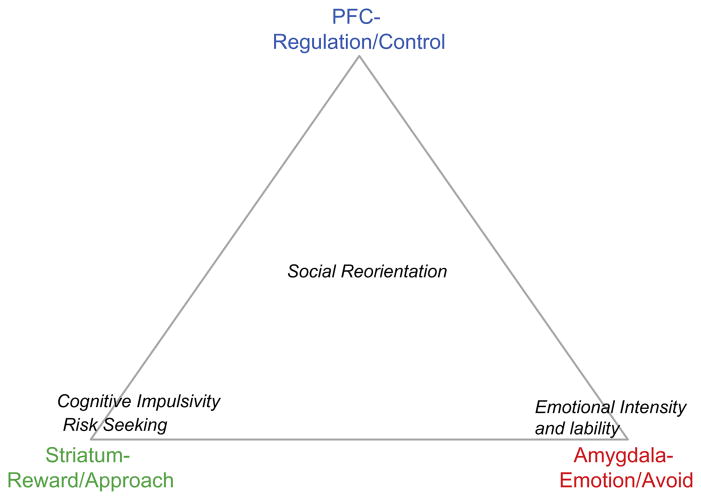Fig. 3.
The triadic model. The prefrontal cortex (PFC) has a reciprocal relationship with the striatum and amygdala, and the amygdala projects directly to the striatum. Within the triadic model the striatum represents the motivation system, and is associated with approach; the amygdala represents the emotion system, particularly responses to aversive (e.g., fearful) stimuli, and plays a significant role in avoidance; and the prefrontal cortex is the regulatory center, which serves to control approach and avoidance behaviors. Of the four behaviors typically observed in adolescence, the striatum is chiefly responsible for risk seeking and cognitive impulsivity; the amygdala for emotional intensity and lability. Social reorientation involves interactions among all three systems.

